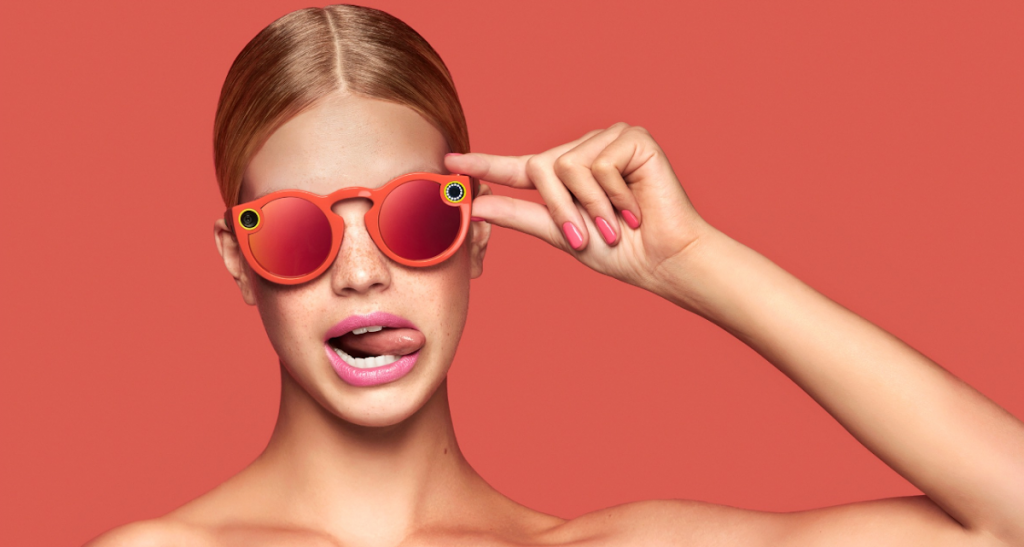The astronomical rise of VR technology in 2016 has only reinforced the fact that consumers increasingly crave experiences — unique chances to escape the everyday and enter a new world. Smart consumer-facing and B2B brands alike jumped at the chance to bring audiences straight into their worlds.
The best brand activations should leave audiences feeling different about the brand than they did before —and most importantly, compelled to action. Have a look at ten activations that succeeded in 2016.
1. Snapchat Shows Up Google Glass

One of 2016’s most talked-about launches is Snapchat’s answer to Google Glass: Snapchat Spectacles. While Snapchat is famous for enabling users to provide a window into their lives, Spectacles takes that idea one step further, allowing users to wirelessly broadcast their daily activities from their perspective directly to their screen. Snapchat’s Spectacles have a massive waiting list, and have already been used to record a live surgery— not bad for a product that launched a month ago.
2. IBM Makes the Future Fun
At SXSW, IBM needed to find an engaging way to showcase their array of cognitive solutions for B2B companies. They captured the attention of business owners and developers by creating an activation that applied their cognitive innovations to everyday scenarios: like a “cognitive cocktail bar” serving custom drinks by the AI-powered Watson and a developer playground, powered by the guests’ personalized RFID bracelets. This creative approach won the brand major points by applying a spirit of fun to their most sophisticated technology.
3. Statefarm Is a Good Neighbor
At music festivals Bonnaroo and Lollapalooza, Statefarm brought its iconic “Like a Good Neighbor, Statefarm is there” tagline to life, and in doing so, succeeded in connecting with millennials — a challenging feat for an insurance company. Statefarm offered vehicle assistance for visitor’s cars, toiletries like shampoo and toothpaste for revelers who forgot them at home and charging stations in a “Here To Help Lounge.” These activations enabled festival attendees to experience the Statefarm brand promise that no matter what crises may arise, Statefarm has your back.
4. PwC Goes for the Oscar
How does a B2B financial firm increase impressions on Twitter 136 fold? PwC accomplished just that with its “Ballot Briefcase” Oscars campaign. The campaign ran on Snapchat and followed the briefcase, which was carrying Oscar ballot’s on its unpredictable journey to the award ceremony. Tapping into an essential pop culture moment helped earn the brand a Shorty Award for best social marketing campaign by a B2B company.
5. GE Makes the Next “Serial”
In recent years, GE has emerged as a leader in exceptional B2B marketing tactics. Winner of a 2016 Webby Award, GE’s brilliant Podcast Theater activation engages both B2C and B2B consumers by using a series of podcasts to tell gripping stories that explore themes relating to GE’s cutting-edge work in science and technology. Expanding on the huge success of last year’s serial podcast, “The Message,” GE launched a thriller about AI to rave reviews.
6. American Greetings Goes Analog
Sometimes, to differentiate your brand in a saturated market, it’s best to go left when everyone else is going right. Case in point? American Greetings’ disruptive activation at SXSW : #Analog. At their analog hub, paper artists built paper installations, a “stitch artist” created embroidered selfies and classes offered visitors the chance to try their hand at hand-lettering. Amongst countless high-tech competitors vying for attention, American Greetings’ powerful statement that analog experiences still matter to consumers emerged as a standout.
7. REI Goes Dark and Patagonia Goes Green for Black Friday
In a widely-lauded activation that earned the brand a Cannes Lion, REI impressed consumers with #OptOutside. On Black Friday, instead of enticing customers with sales, REI made the drastic move of closing their stores and giving their 12,000 employees a paid day off to partake in outdoor activities. While this unprecedented activation caused the brand to miss out on Black Friday revenue, this choice inspired positive feelings about the brand that will likely inspire long-term brand loyalty.
In contrast to closing and going outside to play, Patagonia remained open for Black Friday but took an equally buzz-worthy stance against the holiday marked by sales and excess when it vowed to donate 100% of its Black Friday profits to grassroots environmental groups. Sales, and thus their donation, hit $10 million.
8. Paypal Takes Execs For A Ride
In an excellent example of B2B experiential marketing creating whole new brand experiences, Paypal teamed up with Uber at conference LeWeb Paris for a program called “Meet the Speakers, Mobile Office Hours.” The activation gave festival attendees a chance to take a 30-minute Uber ride with one of the conference’s executive speakers. This non-traditional approach for helping professionals make meaningful business connections served to cement Paypal as brand dedicated to helping businesses.
9. Ford Takes Millennials For a Ride
Until Ford’s activation “Escape the Room NYC,” the vehicle test drive has never been improved on. To promote the Ford Escape to millennials, Ford created the first ever “driveable game” — a scavenger hunt-like program that challenged visitors to drive an Escape through different spaces and complete tasks along the way. This experience achieved major results for the brand by actually getting millennials to try out a Ford Escape, leading to sales.
10. JetBlue Time Travels
To celebrate their new route to Palm Springs, JetBlue got aboard the nostalgia train (or rather, plane) with two immersive activations. With Retrojet, they revived the aesthetic of mod 60’s air travel by developing vintage-style branding that imagined what JetBlue would look like if it were around in the 60s. They painted an aircraft in retro hues and flight attendants wore period-appropriate uniforms. This genius move was accompanied by a pop-up “Time Travel Agency” in Soho decked out like an authentic old-school travel agency.
In the year ahead, expect to see VR and AI trends in brand activations become ubiquitous and an increase in creative activations from forward-thinking B2B brands.